History & Geology
The Goldfield Mining District -- Then and Now
March 2017 by W. Dan Hausel
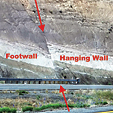 In 1983, some of the ore yielded more than 2,500 ounces of gold within 30 feet of the surface. The shoot pinched to a narrow vein.
In 1983, some of the ore yielded more than 2,500 ounces of gold within 30 feet of the surface. The shoot pinched to a narrow vein.
Liberty and the Phoenix Mine
Liberty, Washington is located in the mountains near Yakima and Ellensburg. There is nothing much in Liberty except for about 20 houses on patented mining claims and a lot of dry holes.
All About Pyrite
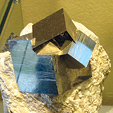 Most prospectors learn early that pyrite is fool's gold...but the truth is it can be an excellent indicator mineral for gold and in many cases does contain small amounts of gold.
Most prospectors learn early that pyrite is fool's gold...but the truth is it can be an excellent indicator mineral for gold and in many cases does contain small amounts of gold.
All About Native Silver
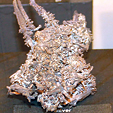 Some of the wire forms are strange and fantastic, with wires sticking out in twisted, seemingly random directions. Others have deformed crystals and all of them have significant value to collectors.
Some of the wire forms are strange and fantastic, with wires sticking out in twisted, seemingly random directions. Others have deformed crystals and all of them have significant value to collectors.
Gold in Tertiary Gravels
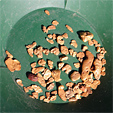 In some places, semi-continuous sections of riverbed can easily be linked in many places to identify the path of the ancient rivers.
In some places, semi-continuous sections of riverbed can easily be linked in many places to identify the path of the ancient rivers.
Why So Much Gold in Nevada?
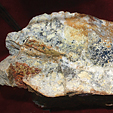 Nevada produces about 75% of all the gold mined in the US. This means that all the other 49 states combined only produce 25%, and this includes California, Alaska and Arizona.
Nevada produces about 75% of all the gold mined in the US. This means that all the other 49 states combined only produce 25%, and this includes California, Alaska and Arizona.
Know Your District
We have to remember that the earliest miners were not geologists, but came from a variety of backgrounds. Their survival depended on finding enough gold so they worked hard and adapted to whatever challenges these new areas presented.
California: The Land of Big Nuggets—Part I
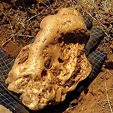 The nugget sat there in plain sight, though it was covered in dirt, while hundreds of people had passed that way every day.
The nugget sat there in plain sight, though it was covered in dirt, while hundreds of people had passed that way every day.
Subscription Required:
The Bawl Mill
• Ask The Experts: Can you review the differences in dry washers?
• Ask The Experts: Will this detector work for me?
• Ask The Experts: Nickel assays
• Ask The Experts: Potential for developing magnesite deposit
• Our Readers Say
• Selectable Frequency vs Multi Frequency Detectors
• All About Chalcopyrite
• Detecting Alluvial Bench Deposits -- Pt II
• Nevada's Lithium Boom
• Old Patch, New Detector
• Over The Divide: James H Harrand & Daniel Yesberger
• Melman on Gold & Silver
• Mining Stock Quotes and Mineral & Metal Prices







